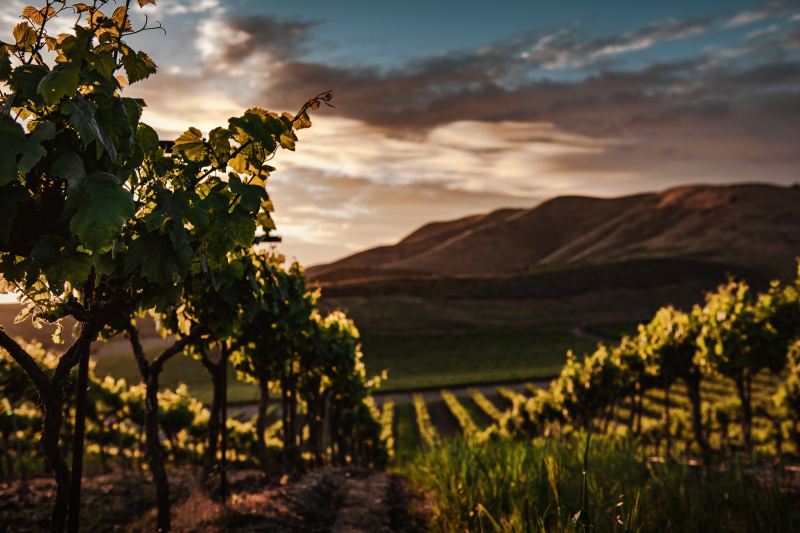
There are 269 American Viticultural Areas, but like most people, you probably don’t really know what that means. That’s okay; we’re here to break down the viticultural term, a fascinating designation used to showcase specific regions and their unique effects on the wine grown there.
An AVA is an important concept to understand, as it’s a big deal in winemaking. Europe practically invented the movement, which is rooted in terroir. Think about regions like Champagne, Burgundy, and Bordeaux—all distinctive in terms of where they are on the map and the flavor of the resulting wines.
With AVAs growing in number every year and increasingly leveraged for marketing value and in telling the backstory of a particular wine, it’s high time you got to know the term.
What does AVA mean?

As mentioned, the acronym stands for American Viticultural Area. These federally recognized areas designate special parts of the world where unique conditions occur. In the U.S., the TTB oversees appellations, which, once approved, can be used on wine labels, arming imbibers with more context and knowledge about what’s inside the bottle.
AVAs differ in terms of physical geography—the climate, elevation, soil type, steepness of the slopes, etc. These physical differences create conditions that cater to specific types of grapes that enjoy specific types of growing seasons. In a cooler AVA, like the Willamette Valley, you’ll see cooler-climate wines like Chardonnay and Pinot Noir. Meanwhile, a warmer region like Red Mountain in Washington State, which gets less annual rainfall than Phoenix, is optimal for bigger reds like Merlot.
Seemingly small details from AVA to AVA can add up to big differences in the glass. An appellation with lots of wind might have thicker-skinned grapes that produce more concentrated wines, while an AVA with a particular soil series may show more minerality in its wines. Every wine tells a one-of-a-kind story of a place, and that’s what the AVA is all about. The coolest part of wine might just be that that story can not only be told but also seen, smelled, and tasted.
The AVA has created cool communities within communities in the wine world. Often, appellations will honor the uniqueness of their locations by coming together in the form of growing organizations, sharing intel and helping each other tell the story of their coordinates through the power of wine.
How is an AVA created?

Growers and producers get together to petition the government and earn the recognition. They do this via the TTB, and while the process can take years, it’s almost always worth the effort, as being able to include that info on the label is invaluable. Those with experience within the proposed area agree on borders, defined by things like microclimates, soil types, sun exposure, elevation, and the like. Winemakers and grape growers usually enlist geologists and other scientists en route, further making their collective case for the appellation with added details that make that specific area truly unique.
Now, when that designation is granted, 85% or more of the wine must be grown within those boundaries to use the appellation name. This is the federal percentage, and it can be even higher from state to state (and with so much purity in winemaking, oftentimes, the entirety of the wine is grown and made within an AVA when that AVA is listed). The wine can be produced elsewhere, but within the state or states where that AVA is located. Hence, you tend to see wineries in western Washington making Walla Walla wines, meaning the fruit is grown in that eastern Washington appellation and then trucked over to be fermented, pressed, aged, and bottled.
What are some AVAs of note?

Interestingly, the first AVA established in America is located in Missouri. While states like California and Washington tend to hog the winemaking spotlight, there are AVAs in an impressive 34 states.
Augusta AVA
The oldest AVA in the U.S., located about 40 miles west of St. Louis, was established in 1980. The relatively small appellation is set along the Missouri River, with loamy soils where grape varieties like Cabernet Sauvignon, Chardonnay, St. Vincent, and more grow.
Napa Valley AVA
The most famous AVA in the land was created in 1981 and is now home to 16 sub-appellations, such as Los Carneros, Mt. Veeder, and Rutherford.
Upper Mississippi Valley AVA
A colossal appellation, this AVA is a whopping 29,900 square miles, making it the biggest in America. Spanning four states, the Midwestern appellation was created in 2009.
West Elks AVA
Home to some of the highest-elevation vineyards in America, West Elks AVA is set on the western slope of Colorado. Known for cool-climate white wines such as Riesling, West Elks touts vines rooted to land more than 6,000 feet above sea level.
Kaw Valley AVA
Kaw is a pending AVA in Kansas, where more than 30 producers are crafting wines from homegrown grapes. It would be the first formal appellation in the state, set along the meandering Kansas River (otherwise known as Kaw).
Now that you’re well-read when it comes to AVAs, check out our wine terminology guide and 11 excellent American wineries worth booking a vacation around. You’ll also like our feature on making wine country maps. Cheers!


